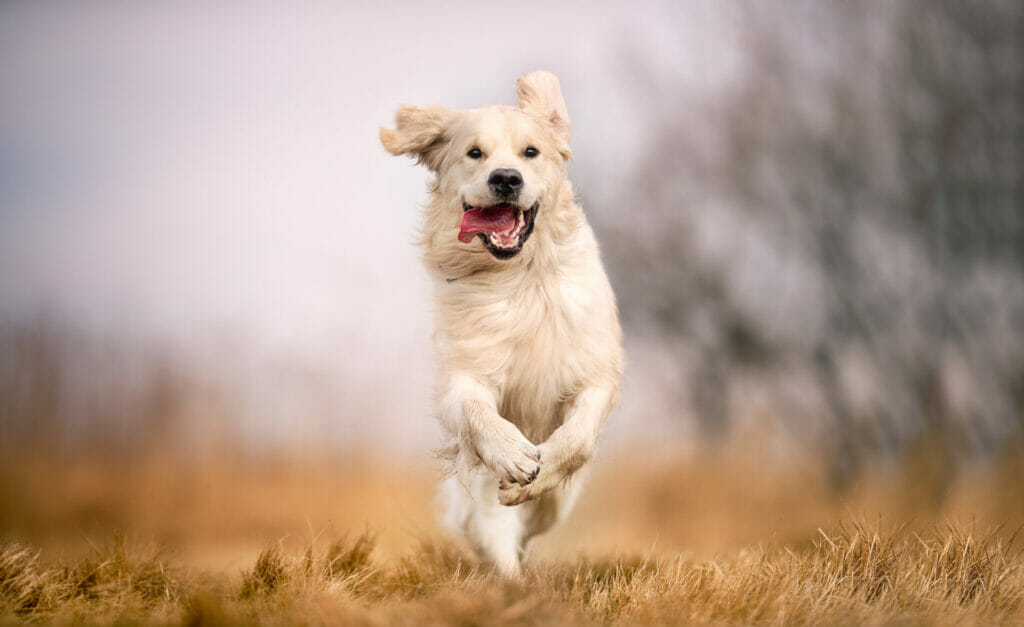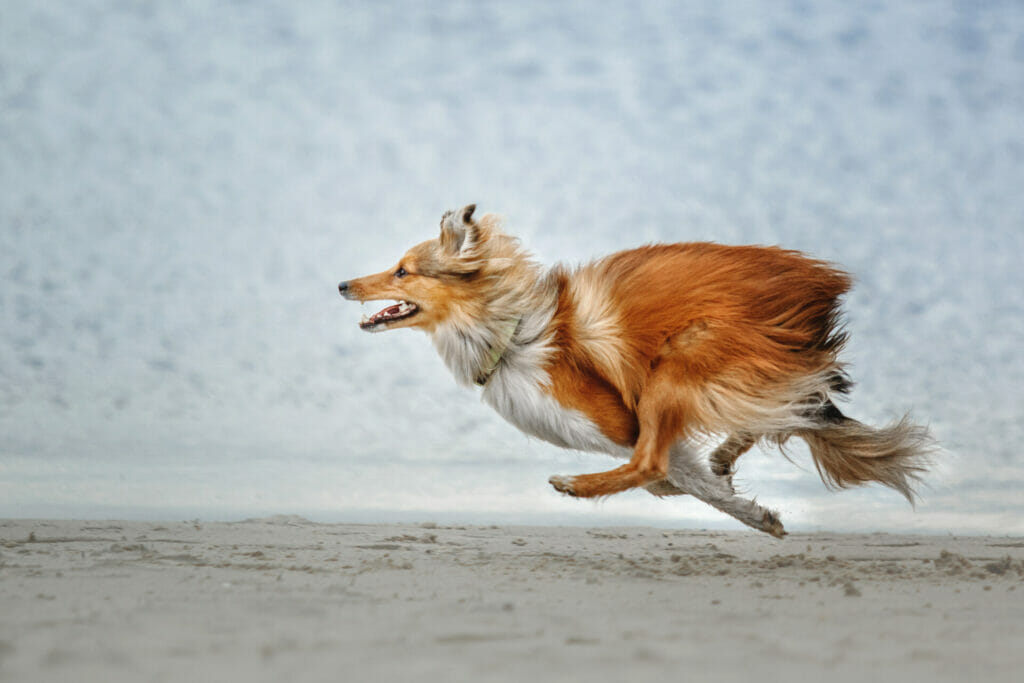What Are Zoomies? Does your dog ever go racing around your house, spinning in circles up and down off furniture? This high energy running seemingly out of nowhere is a behavior known as the zoomies. Although a bit surprising for new dog owners, these are a very normal part of dog behavior and are a way for dogs to burn off excess energy in a quick burst.

Frenetic Random Activity Periods (FRAPs)
Although most dog owners and dog professionals refer to this behavior as the zoomies, there is also a technical name: Frenetic Random Activity Periods or FRAPs. FRAPs refer to these unexpected bursts of energy that our dogs get. FRAPs are most common in puppies and young dogs. Although young dogs might get them most often, dogs of any age can acquire the FRAPs. Dogs of all sizes and breeds also experience these at all stages of life.
Cause of Zoomies
Zoomies are a natural way for dogs to burn off excess energy. There is no specific cause for them; each dog will have their own triggers for this behavior. Some dogs get zoomies more frequently than others, depending on their temperament and energy levels. Although there is no specific cause of the them, there are some everyday experiences that lead to dogs starting to zoom. Dogs will often zoom when they are overstimulated or extra excited to be somewhere new, like at the beach. Dogs may also begin to go into a zoomie’s behavior after a bath and after pooping. If you watch your dog closely, you’ll likely notice some patterns for when your dog starts to get the zoomies.
Zooming too much?
The occasional zoomies session is very common for dogs and nothing to be worried about. However, if you notice that your dog is getting the zoomies a lot, it may be a sign that your dog is bored or under-exercised. If your dog starts to get the them more than usual, it may be bored and under-stimulated. If this happens, try to increase the amount of physical and mental exercise your dog is getting and see if that impacts the frequency of your dog’s zoomies.
Stress Zoomies?
Although in most cases, zoomies happen naturally for dogs when they are overstimulated and feeling excited. Zoomies can also occur when dogs are stressed, distressed, or overwhelmed. To determine if your dog’s zoomies are stressed or happy, watch your dog’s body language and behavior before they start zooming and after their zoomie session.
If your dog’s body is tense, tail tucked, and tense features, they may be stressed, and your dog might be zooming to try to manage or alleviate that stress. If your dog’s body language is soft and relaxed, they probably are experiencing happy zoomies. If your dog does seem stressed when they are having them, try to determine what stressful experiences are happening before your dog starts zooming so you can attempt to reduce the amount of stress your dog is experiencing.
Safety Concerns
Zoomies are natural behavior for dogs, and are generally not something to be worried about. However, dogs who have they can hurt themselves by running into furniture, knocking things over, or slipping on slick floors like hardwoods. Try to create safe areas of your home for your dog to get the zoomies by putting out area rugs to give them more traction while they run. It’s also a good idea to quickly move breakable items out of your dog’s reach so they won’t fly while your dog starts zooming.




















